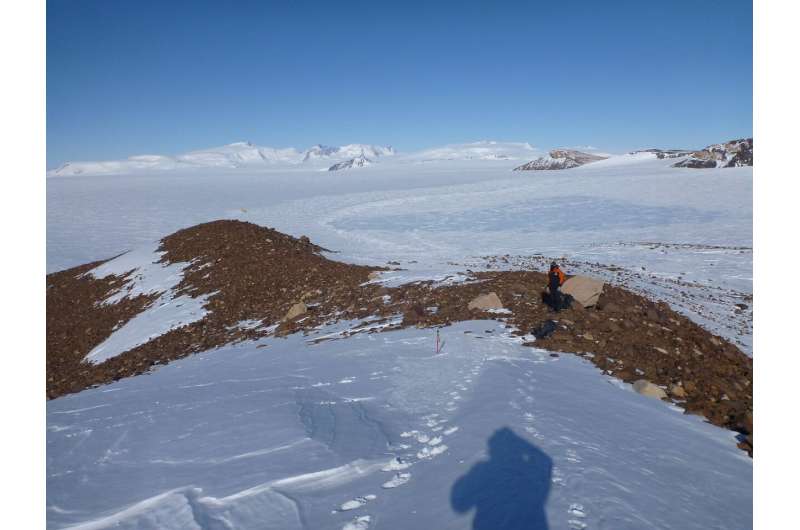The ice-surface lowering of Skelton Glacier is due to the ice retreat in the Ross Sea

Toshi Fujioka, cosmogenic dating researcher at Centro Nacional de Investigación sobre la Evolución Humana (CENIEH), has participated in a study on the reconstruction of ice-surface lowering in the upper Skelton Glacier, by the Ross Sea, in Antarctica, recently published in the journal Quaternary Science Reviews, stating that predicting the contribution of Antarctic ice-sheet melting to sea level rise in the face of global climate change is hampered by our limited knowledge in the ice-sheet response to climate variability.
This study, led by researcher Jacob Anderson from the University of Otago (NZ), suggests that the ice surface lowering of the Skelton Glacier is likely to have been in response to retreat of the grounded ice in the Ross Sea. In addition, it provides a new constraint for an ice surface lowering history of an upvalley site, where ice elevation data are still scarce in this area of the Glacier.
Two approaches were taken. First was the conventional 'dipstick' approach where Beryllium-10 exposure ages of materials from different elevations above present ice, such as nunatak (isolated peak surrounded by ice), is used to constrain the timing and height of the past ice surface. Second was exposure dating of inner (or blue-ice) moraines, "that is, accumulated debris on deflated ice surface, and yet less understood glacial features ubiquitous in upvalley areas," explains Toshi Fujioka.
Last Glacial Maximum
Current ice-sheet models, to some extent, succeed to reconstruct ice fluctuations since the Last Glacial Maximum (LGM). However, substantial offsets exist between the model outputs and field observations, particularly along the coastal margin where drastic changes are occurring.
Elevation transect from the Escalade Peak, a nunatak in the upper Skelton valley, indicates that the ice surface in this area was at least 50 m, or perhaps >120 m higher than present during the LGM. In contrast, Beryllium-10 exposure ages from blue-ice moraines adjacent to Escalade Peak are complex, and cannot be interpreted as direct ice surface elevation constraints.
"However, they may provide an indirect constraint on the timing of ice thinning through the combined processes of snow-ice deflation and debris exhumation via ice melting, wind erosion and sublimation," says Jacob Anderson.
Together, Beryllium-10 exposure ages from the blue-ice moraines suggest ice surface deflation may have initiated by 19,000 years ago, but the majority of ice surface lowering at Escalade Peak likely occurred after 15,000 years ago and reached the present-day ice level at 6,000 years ago as constrained from the nunatak data.
The result also indicates that the current ice-sheet models substantially overestimate the LGM ice surface in the upvalley area by several hundred meters. Thus, slow-flowing upvalley glaciers experienced smaller ice-elevation change since the LGM than previously predicted.
"This study highlights the lack of resolution in the current ice-sheet models for the prediction of local ice elevations and urges to conduct more detailed, local studies to improve the models," concludes Toshi Fujioka.
More information: Jacob T.H. Anderson et al. Ice surface lowering of Skelton Glacier, Transantarctic Mountains, since the Last Glacial Maximum: Implications for retreat of grounded ice in the western Ross Sea, Quaternary Science Reviews (2020). DOI: 10.1016/j.quascirev.2020.106305
Journal information: Quaternary Science Reviews
Provided by CENIEH




















